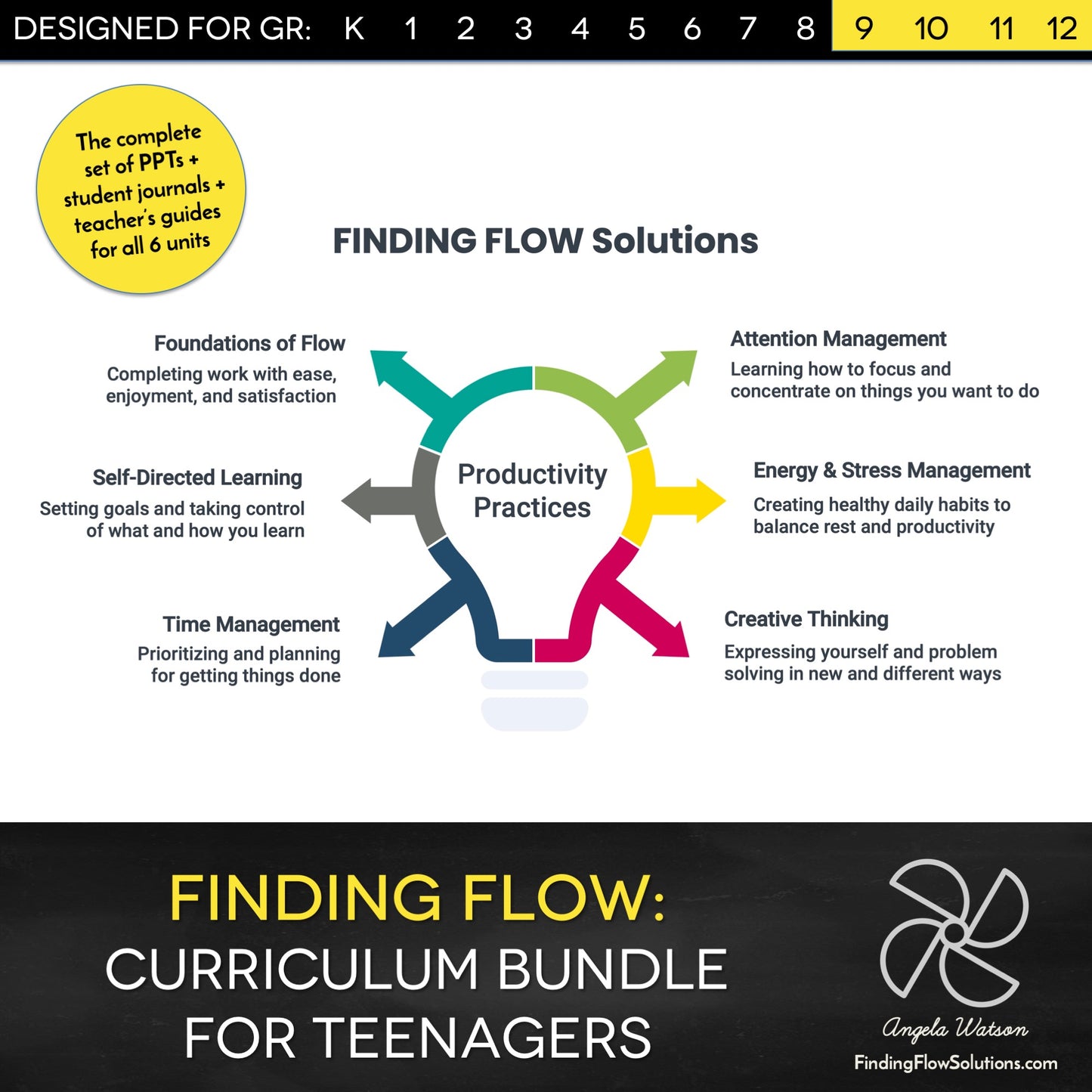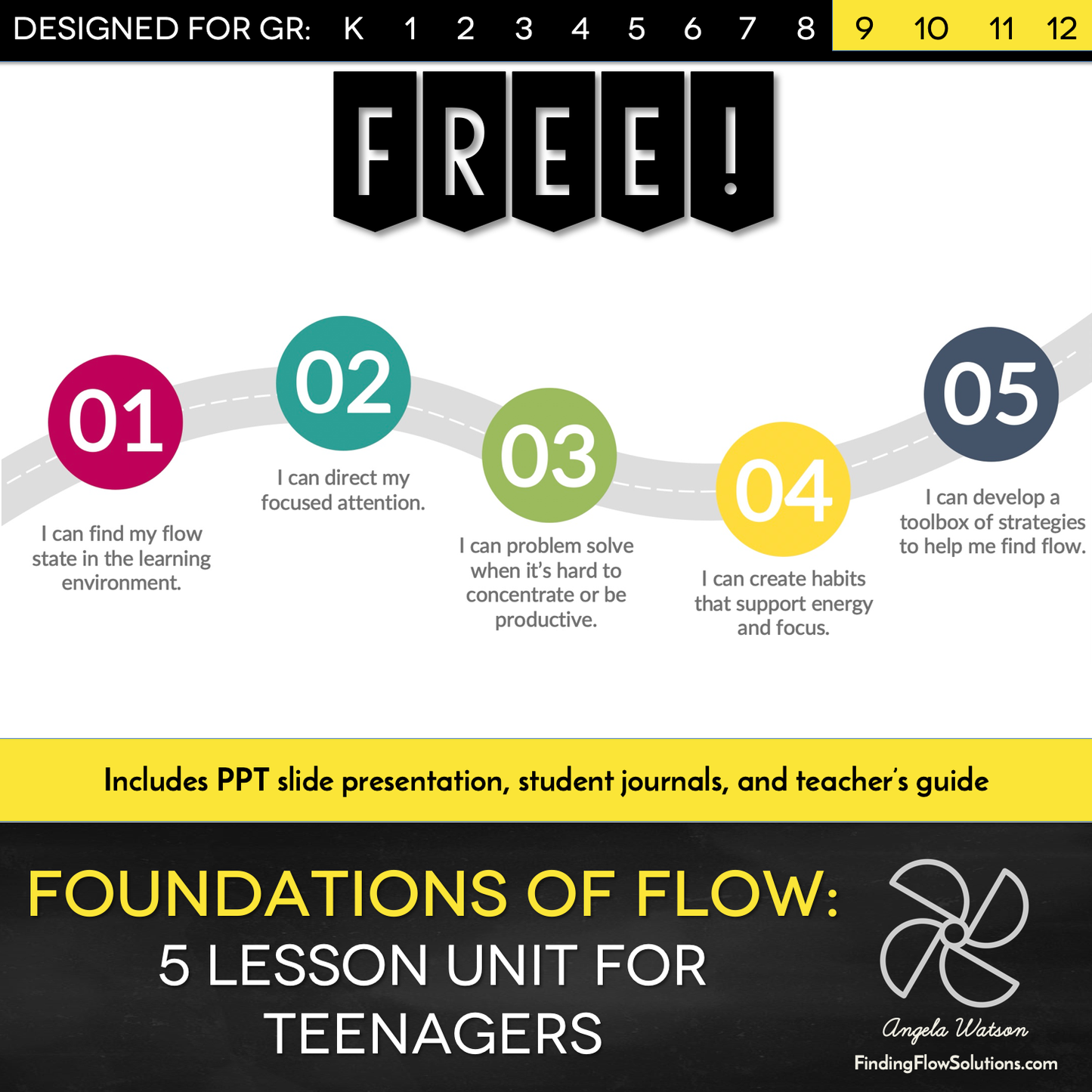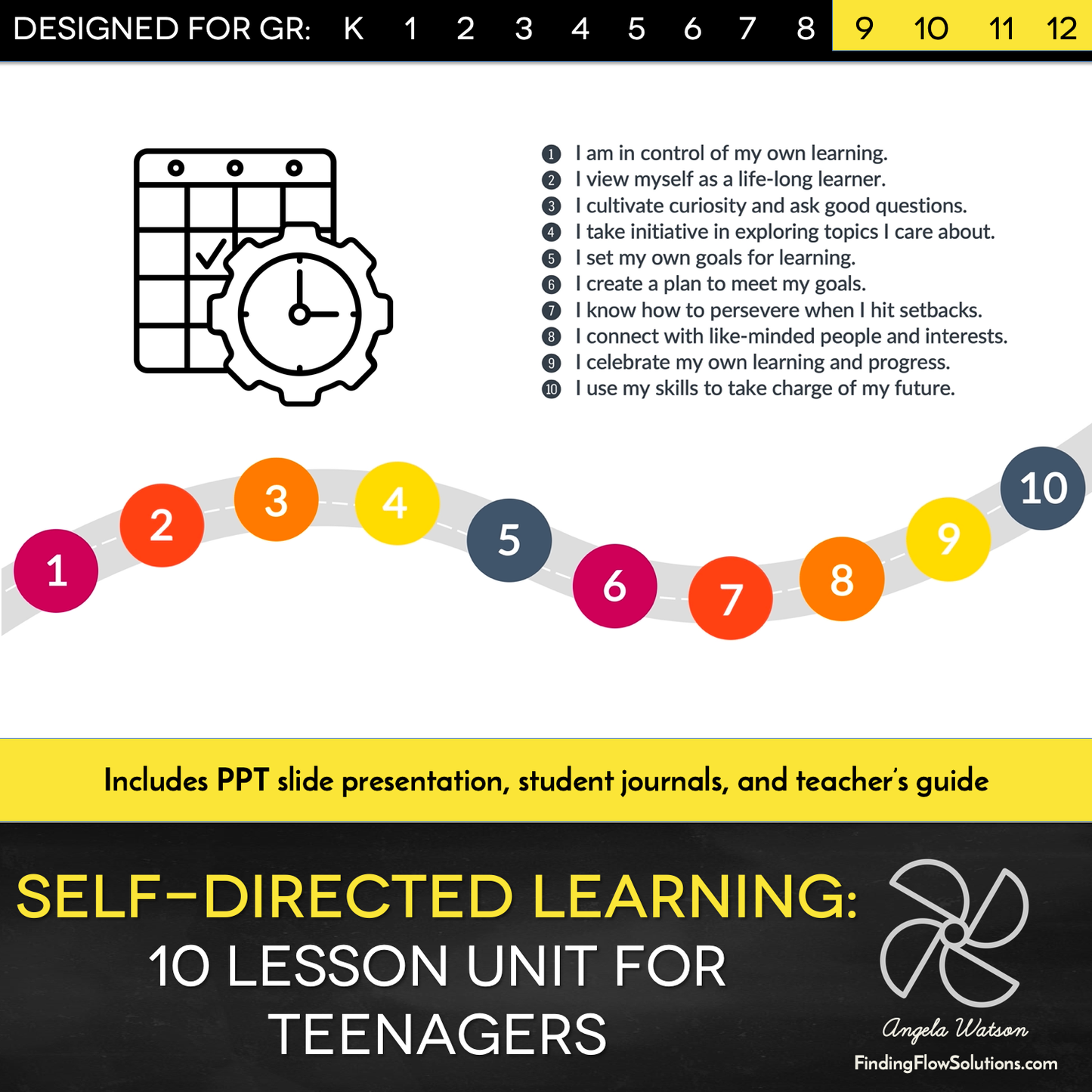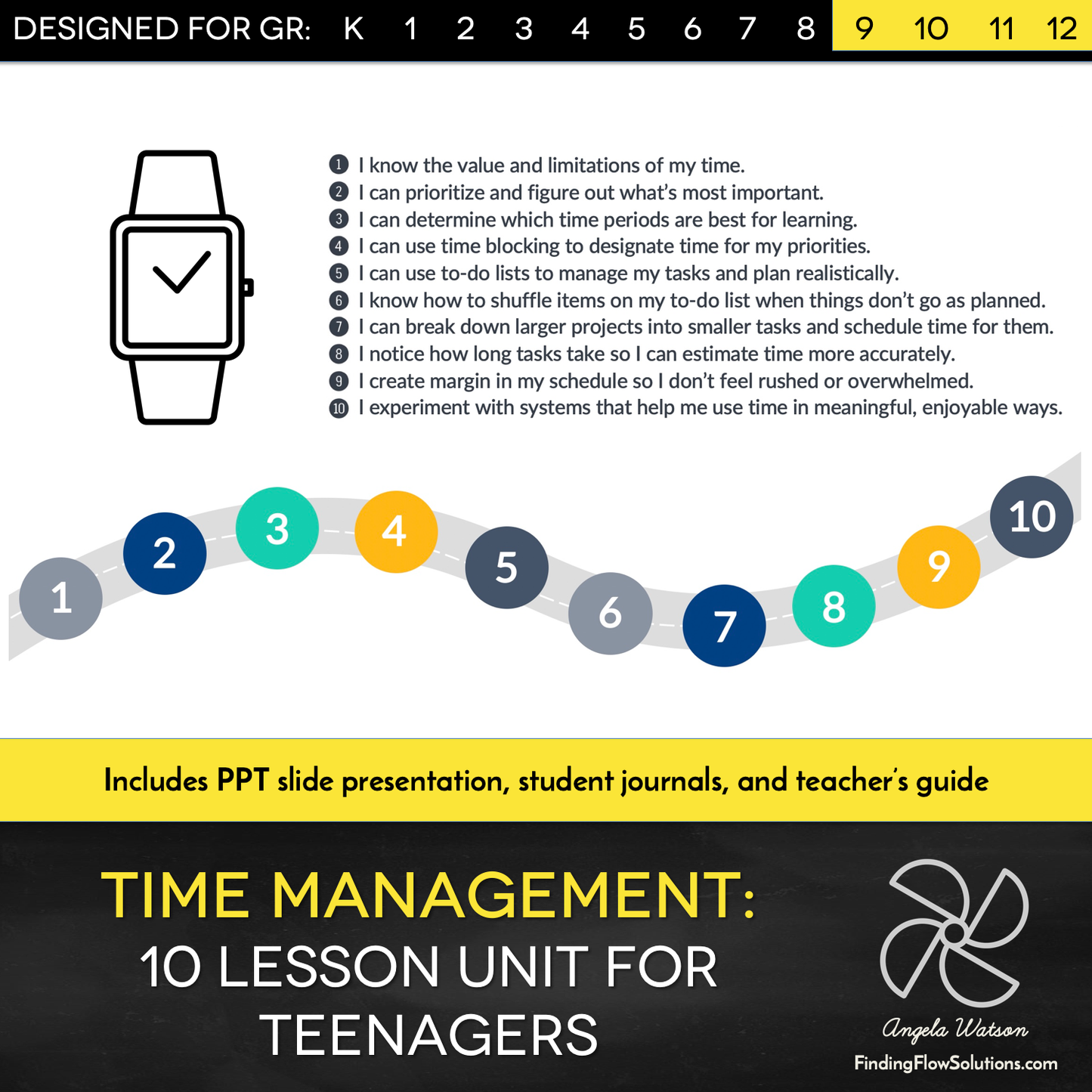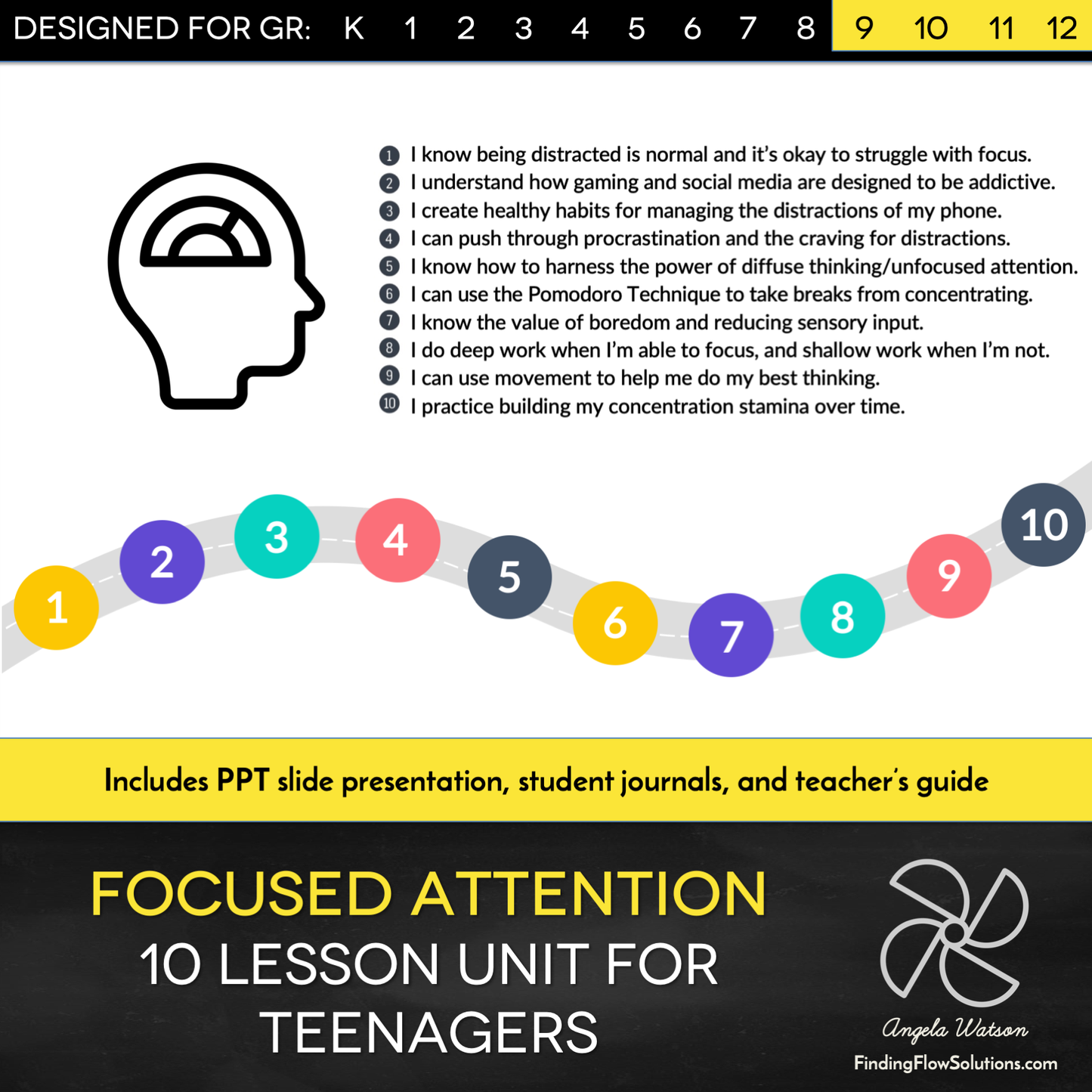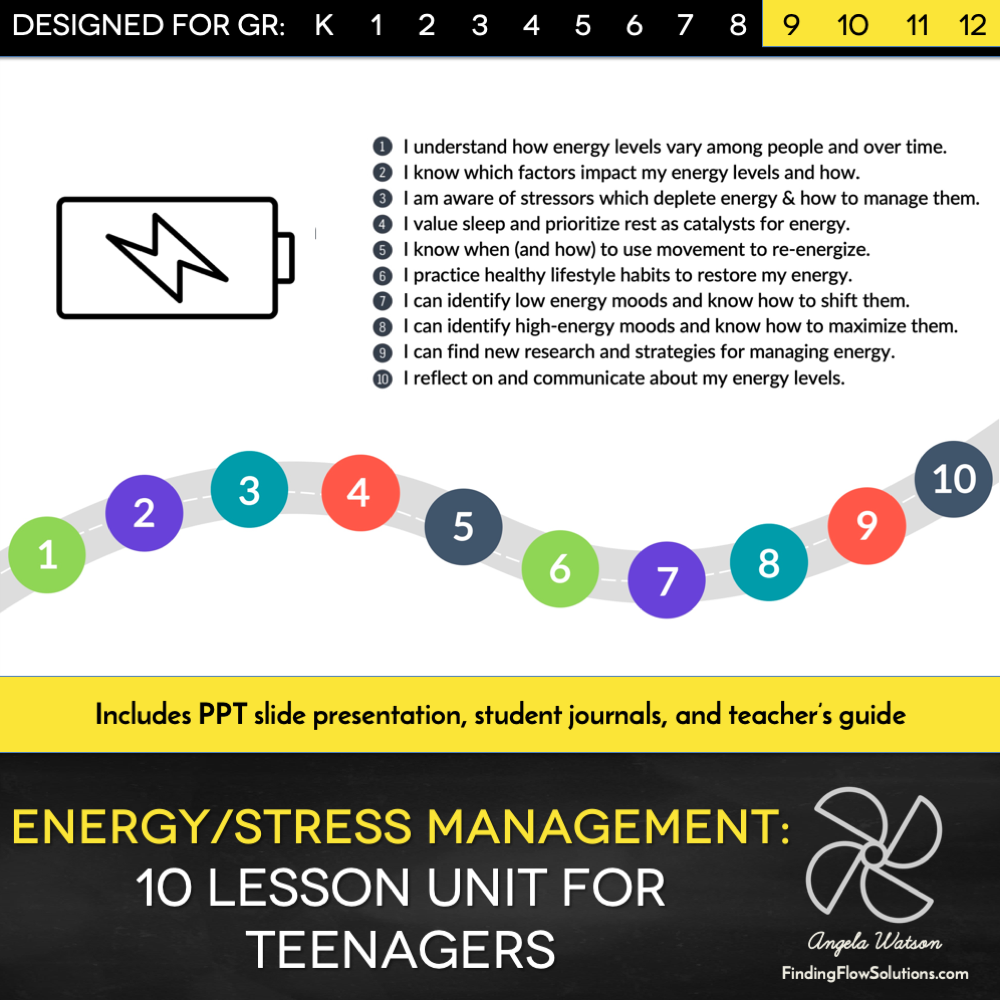Truth for Teachers
Discounted Bundle: All 6 units of High School Finding Flow Solutions
Discounted Bundle: All 6 units of High School Finding Flow Solutions
Couldn't load pickup availability
Bulk discount: get the complete curriculum line for high school!
UNIT 1: Foundations of flow (free)
- I can find my “flow state” in the learning environment.
- I can direct my focused attention.
- I can problem solve when it’s hard to concentrate or be productive
- I can create habits that support energy and focus.
- I can develop a toolbox of strategies to help me find flow.
UNIT 2: Self-Directed learning
- I am in control of my own learning.
- I view myself as a life-long learner.
- I am curious and inquisitive.
- I take initiative in exploring topics I’m curious about and solving problems.
- I set my own goals for learning.
- I have a plan to make sure I meet my goals.
- I know how to persevere when I hit setbacks.
- I connect with like-minded people around my interests.
- I celebrate my own learning and progress.
- I use my talents to take charge of my future.
- I know the value and limitations of my time.
- I can prioritize and figure out what’s most important.
- I can determine which time periods are best for learning.
- I can use time blocking to designate time for my priorities.
- I can use to-do lists to manage my tasks and plan realistically.
- I know how to shuffle items on my to-do list when things don’t go as planned.
- I can break down larger projects into smaller tasks and schedule time for them.
- I notice how long tasks take so I can estimate time more accurately.
- I create margin in my schedule so I don’t feel rushed or overwhelmed.
- I experiment with systems that help me use time in meaningful, enjoyable ways.
- I know that being distracted is normal and it’s okay to struggle with focusing.
- I understand how gaming and social media are designed to be addictive.
- I create healthy habits for managing the distractions of my phone.
- I can push through procrastination and the craving for distractions.
- I know how to harness the power of diffuse thinking and unfocused attention.
- I can use the Pomodoro Technique to take productive breaks from concentrating.
- I know the value of boredom and reducing sensory input.
- I can do deep work when I’m concentrating well, and shallow work when I’m not.
- I can use movement to help me do better focused work.
- I can practice building my concentration stamina over time.
UNIT 5: Energy & Stress Management
- I understand how energy levels vary among people and over time.
- I know which factors impact my energy levels and how.
- I am aware of stressors which deplete energy and how to manage them.
- I value sleep and prioritize rest as catalysts for energy.
- I know when (and how) to use movement to re-energize.
- I practice healthy lifestyle habits to restore my energy.
- I can identify low energy moods and know how to shift them.
- I can identify high-energy moods and know how to maximize them.
- I can find new research and strategies for managing energy.
- I reflect on and communicate about my energy levels.
- I can define creativity and its relevance to my life.
- I have strategies for sparking my imagination when I get stuck.
- I can identify and apply the four stages of creativity.
- I experiment with practices to enhance divergent thinking.
- I can see familiar things in new and interesting ways.
- I know how to examine problems from different perspectives.
- I can use warm-ups to prime my brain to think creatively.
- I know how to use the 7 mental states of creativity to innovate.
- I can generate creative solutions to problems I care about.
- I know how to share and talk about my creative output.
Note that the exact titles of each lesson and order of lessons may change during their development; however, these are the key themes and concepts that will be included in the curriculum bundle.
What’s included in each unit?
These lessons are designed to be no-prep or minimal prep. You don’t have to master any of these skills yourself before introducing them to students, as you’ll be learning alongside each other. Each unit has:
- A teacher’s guide (1 page per lesson): This tells you how to prepare and gives you the key ideas taught in the lesson.
- An editable slideshow presentation to guide you and your students through each lesson: Teaching the concepts and introducing activities to students is super simple: just follow the prompts on each slide in PowerPoint! Most units have around 120 slides, all with professionally designed graphics. All video clips are embedded in the slides so you can play them offline and won’t have problems with website blockers.
- An 10 page student self-reflection journal in both printable and typable formats: The length of the journal depends on the unit, but the format is designed to minimize printing and paper use with no filler, fluff, or half blank pages. You can also assign the journal to students in your LMS (such as Google Classroom) and keep everything digital.
FAQ
What grade levels is this for?
This is geared for teenagers (high school) and may be appropriate for some pre-teens (middle school) as well.
What subject areas is this for?
These units are designed to facilitate productivity and deepen student understanding in EVERYTHING they learn, both in school and outside of it. These habits of mind will support students in reading comprehension and writing, along with scientific and mathematical thinking. There are several opportunities in each unit to have students practice applying what they are learning about productivity to your usual curriculum and lessons.
Can it be used outside the regular classroom setting?
Yes! Any group setting will work: homeroom and study hall periods, before/after school programs, group tutoring, etc.
Can students do these lessons entirely on their own?
No, there is guided instruction in every lesson that the teacher facilitates, and multiple opportunities for students to learn with a partner and group. A self-guided version for individual students (in the form of a journal) will be available in 2024.
How many lessons are in each unit?
The first (free) unit, Foundations of Flow, has 5 lessons. All other units have 10 lessons.
How much class time do the lessons take up?
Most lessons take 15-20 minutes. The only exception are lessons that guide students to apply productivity practices to your curriculum, meaning students will be working on your usual activities, concepts, and skills during the implementation of the Finding Flow lessons. (You can see an example of how this works in Lesson 2 of the free unit, Foundations of Flow.)
How do I pace the lessons with my students?
Any way that fits best into your curriculum! You can implement one lesson each day, one lesson each week, or 2-3 each week.
Still not sure? Try out the FREE 5 unit lesson on flow theory here first.
Share
